#bull run battlefield national monument
Text
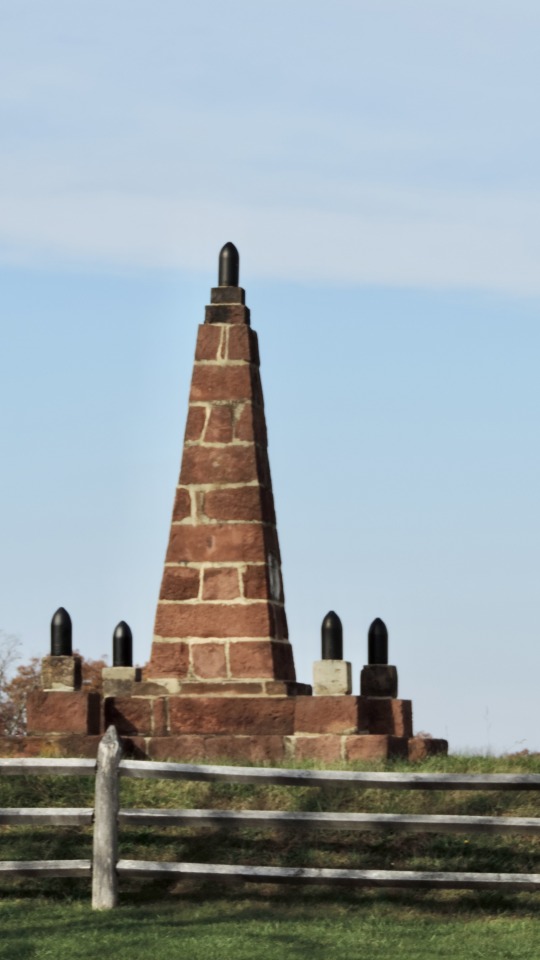
Patriots Monument, Bull Run Battlefield National Monument, Prince William County, Virginia, 2015.
"In Memory of the Patriots Who Fell at Bull Run July 21, 1861 Erected June 10th 1865"
Said to be the first monument on a battlefield constructed to honor the dead Union soldiers who died protecting the US from the terrorists of the Confederacy.
I had intended to post several photos of Civil War sites on the date the war ended, 9 April, but failed to do so thus this is a few days late. It is worth remembering those who were truly patriots and who died protecting the country from its enemies both domestic and foreign.
#battlefield#monument#union patriots#bull run battlefield national monument#prince william county#virginia#2015#photographers on tumblr
6 notes
·
View notes
Text



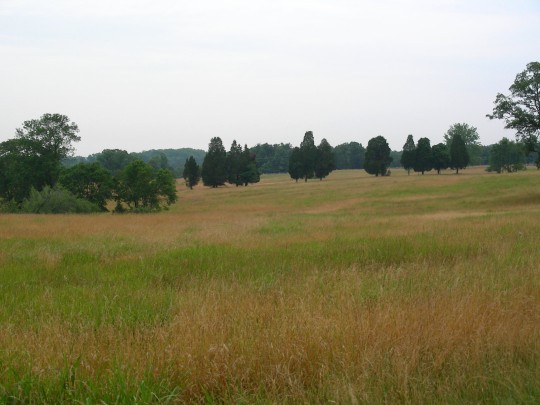







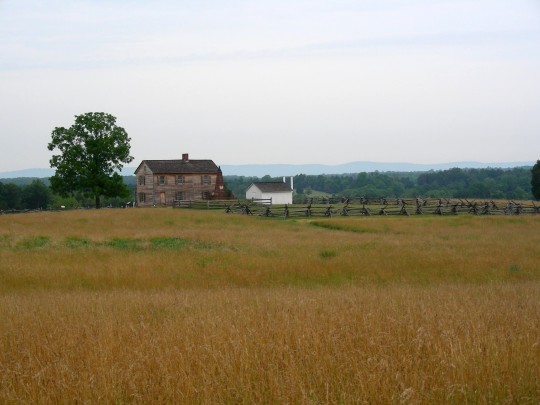
American Civil War: The Second Battle of Bull Run, also known as the Battle of Second Manassas ended on August 30, 1862.
#American Civil War#Second Battle of Bull Run#Battle of Second Manassas#ended#30 August 1862#Manassas National Battlefield Park#Henry Monument#Henry House#Virginia#travel#original photography#vacation#tourist attraction#landmark#architecture#landscape#countryside#nature#flora#summer 2009#anniversary#US history#tombstone#forest#woods#fields#US Civil War
44 notes
·
View notes
Text

Ashishishe (c. 1856–1923), known as Curly (or Curley) and Bull Half White, was a Crow scout in the United States Army during the Sioux Wars, best known for having been one of the few survivors on the United States side at the Battle of Little Bighorn. He did not fight in the battle, but watched from a distance, and was the first to report the defeat of the 7th Cavalry Regiment. Afterward a legend grew that he had been an active participant and managed to escape, leading to conflicting accounts of Curly's involvement in the historical record.
Ashishishe was born in approximately 1856 in Montana Territory, the son of Strong Bear (Inside the Mouth) and Strikes By the Side of the Water. His name, variously rendered as Ashishishe, Shishi'esh, etc., has been said to literally mean "the crow", however, this may be a misunderstanding as the Crow word for "crow" is "áalihte". Ashishishe may be a transliteration of the word "shísshia", which means "curly". His death record lists his name as being "Bull Half White (Curly)". He resided on the Crow Reservation in the vicinity of Pryor Creek, and married Bird Woman. He enlisted in the U.S. Army as an Indian scout on April 10, 1876. He served with the 7th Cavalry Regiment under George Armstrong Custer, and was with them at the Battle of Little Bighorn in June of that year, along with five other Crow warrior/scouts: White Man Runs Him, Goes Ahead, Hairy Moccasin, his cousin White Swan, and Half Yellow Face, the leader of the scouts. Custer had divided his force into four separate detachments, keeping a total of 210 men with him. Half Yellow Face and White Swan fought alongside the soldiers of Reno's detachment, and White Swan was severely wounded. Curly, Hairy Moccasin, Goes Ahead and White Man Runs Him went with Custer's detachment, but did not actively participate in the battle; they later reported they were ordered away before the intense fighting began. Curly separated from White Man Runs Him, Hairy Moccasin, and Goes Ahead, and he watched the battle between the Sioux/Cheyenne forces and Custer's detachment from a distance. Seeing the complete extermination of Custer's detachment, he rode off to report the news.
A day or two after the battle, Curly found the Far West, an army supply boat at the confluence of the Bighorn and Little Bighorn Rivers. He was the first to report the 7th's defeat, using a combination of sign language, drawings, and an interpreter. Curly did not claim to have fought in the battle, but only to have witnessed it from a distance; since this first report was accurate,two of the most influential historians of the Battle of the Little Bighorn, Walter Mason Camp (who interviewed Curly on several occasions) and John S. Gray, accepted Curly's early account. Later, however, when accounts of "Custer's Last Stand" began to circulate in the media, a legend grew that Curly had actively participated in the battle, but had managed to escape. Later on, Curly himself stopped denying the legend, and offered more elaborate accounts in which he fought with the 7th and had avoided death by disguising himself as a Lakota warrior, leading to conflicting accounts of his involvement. The family story is that he was involved, but when he saw Custer fall, he gutted open a horse and hid inside.
After the Crow Agency had been moved to its current site in 1884, Curly lived there, on the Crow Reservation on the bank of the Little Bighorn River, very close to the site of the battle. He served in the Crow Police. He divorced Bird Woman in 1886, and married Takes a Shield. Curly had one daughter, Awakuk Korita ha Sakush ("Bird of Another Year"), who took the English name Dora.[6] For his Army service, Curly received a U.S. pension as of 1920.
He died of pneumonia in 1923, and his remains were interred in the National Cemetery at the Little Bighorn Battlefield National Monument, only a mile from his home.
🔥 Visit the Native American store here:
🔥 Visit the Native American store here 👉
https://www.nativeamericansno1.com/tags/jewelry
0 notes
Photo
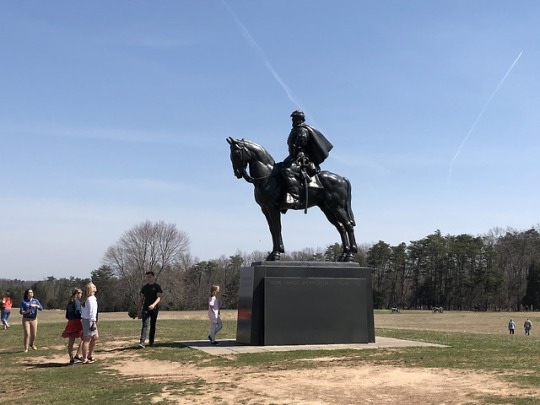
Day 1368: April 13, 2018 There Stands Jackson Like a Stone Wall This larger than life statue of the Confederate General Thomas Jackson sits on the site where he earned the nickname he is better known by, "Stonewall" Jackson. The first battle of the Civil War was fought just north of the town Manassas, along the stream known as Bull Run. According to the popular narrative, a brigade of Virginia withstood the center of the Union attack, turning the tide of the battle, leading to the eventual Confederate victory that day, and leading to another General to cry out to his troops "There stands Jackson, like a stone wall!" A second Confederate victory took place on almost this same spot a year later, but of course it was the Union that eventually won the war. Today the combined battlefields are a large park, part of the National Parks system. There are several monuments scattered around open fields, many of which were erected by veteran's groups in the years after the war. Manassas National Battlefield Park, Virginia
#picoftheday#manassas#prince william county#virginia#national parks#civil war#stonewall jackson#statues#memorials
1 note
·
View note
Text
AMERICA IS IN REBELLION
Police protests have been growing over the years. Commensurate with an increase in police power. Such must stop and be corrected for the good of those suffering suppression.
Two more black deaths of concern in the past 24 hours. The nation is out of control. Beginning with the police.
A black man shot in a Wendy’s parking lot in Atlanta. I viewed the shooting on the internet. The scene one of police out of control in the manner they handled a simple situation.
The other in California. A black man was found hanging from a tree dead. Police claim a suicide. The matter is under investigation, including an autopsy.
One need go no further than the second paragraph of the Declaration of Independence to understand there is no difference between black and white when it comes to the law.
The second paragraph.
“We hold these truths to be self-evident, that ALL MEN ARE CREATED EQUAL, that they are endowed by their Creator with certain inalienable Rights, that among these are LIFE, LIBERTY AND THE PURSUIT OF HAPPINESS. — That to secure these rights, governments are instituted among men, deriving their just powers from the CONSENT OF THE GOVERNED. — That WHENEVER ANY FORM OF GOVERNMENT BECOMES DESTRUCTIVE OF THESE ENDS, it is the RIGHT OF THE PEOPLE TO ALTER OR ABOLISH IT, AND TO INSTITUTE NEW GOVERNMENT, laying its foundation on such principles and organizing its powers in such form, AS TO THEM SHALL SEEM MOST LIKELY TO EFFECT THEIR SAFETY AND HAPPINESS.” (emphasis added)
I have 2 major concerns.
The first is a government cannot operate without some sort of police power. “Defund” actually means “reorganize.” It should if it does not.
Society requires some sort of policing. Whether you like to believe it or not, people are not all the same. There are bad people out there. Some intrinsically evil.
My other concern involves property rights. Yes, there is such a thing as property rights. A person buys a piece of real estate, he owns it. His money paid for it, performed improvements, etc.
In comes a group of protesters. Most black. As in Seattle. They have taken over a 4 or 6 block area, including a police precinct.
I saw a black man at the protest site on TV yesterday explaining what they had p planned for that area (pointing) and then another. Not his to do with. He had not paid for the properties nor earned them.
Property owners have rights also. Not as valuable as human life. However to be considered.
If the police/black problem is not resolved, eventually you will have the blacks and property owners at each others’ throats.
I wrote yesterday re the removal of Confederate statues, changing names of military bases, etc. The point I sought to make was one cannot be selective in so doing. Do them all or none at all.
The question then becomes what is “all.”
Take Arlington Cemetery for example.
In 1900, Congress approved the burial of Confederate veterans in Arlington Cemetery. They numbered 482.
Arlington is divided into sections. The Confederate soldiers lie in section 16. Section 16 is not far from the Tomb of the Unknown Soldier.
There is the Confederate Memorial authorized in 1906. Unveiled by President Wilson in 1914. Intentionally unveiled on the 196th anniversary of the birth of Jefferson Davis.
Since erected, most President send a wreath to be placed at the Memorial on Memorial Day.
There is a Tomb of the Civil War Unknowns in section 26. Dedicated in 1866. The remains of war dead arising from the fields of Bull Run and the Route to the Rappahanak River.
Two thousand one hundred eleven dead from the battles buried in Arlington. Some Union, some Confederate. Scattered remains across the battlefield within a 25 mike radius of Washington. The result of mass carnage. Remains could not be identified.
All buried together. One grave/vault for all.
The history of the land known as Arlington interesting. Reveals connections with both sides of the Civil War.
George Washington’s step grandson was George Washington Parke Custis. His grandmother was Martha Washington.
Custis inherited what he named the Arlington Estate in 1802. From whom, I could not determine. George Washington himself? I do not know. All I could discover was he inherited the property.
Custis wanted the property to be a living memorial to the former President.
So far, everyone concerned with the Arlington property on the side of the angels.
Custis had a daughter Mary. She married Robert E. Lee in 1831. The same Robert E. Lee who led Confederate forces in the Civil War.
When Custis died, he left the estate to his daughter Mary for the duration of her life, and upon her death, to her eldest son.
Robert E. Lee never owned the property himself, though he was executor of his father in law’s will.
The Lees abandoned the property at the start of the Civil War. Union soldiers were coming. The Union seized the property on May 25, 1861. The land had value from a military perspective. It was located on high ground and was perfect for defense purposes in protecting Washington.
The taking by the Union had nothing to do with punishing the Lees. It was taken strictly for its strategic value.
The first Civil War Union dead was buried May 13, 1864. There were 2 national cemeteries at the time. Both overloaded with bodies due to the War. Arlington not a national cemetery yet. Nevertheless, the 2 national cemeteries closed to any further burials the day the first Union soldier was buried at Arlington.
Arlington became a national cemetery June 15, 1864.
Arlington was segregated. As all national cemeteries were at the time. Arlington remained segregated till 1948 when President Truman desegregated it.
White soldiers buried in section 13. African Americans and freed people in section 27. Today there are 3,800 freed African Americans buried in section 27.
Arlington is huge. It has expanded several times. Today 400,000 veterans and eligible dependents are buried in Arlington.
The Lee home long gone, of course.
A law was passed soon after the War began. Property on Union soil could be sold for back taxes. One condition. The owner had to pay the taxes in person.
Mary, wife of General Lee, had failed to pay the taxes. All of $92.07. She claimed illness the day she was to appear to pay the taxes. She sent her cousin Philip Fendall in her place. The authorities refused to accept payment from Fendall as the law required the person who defaulted to appear in person.
The Union purchased the property.
Custis sued. After many years, the case was settled with the Government paying something like $3 million.
Now for the question. Should all the Confederate monuments be removed and as well as all the Confederate graves?
Many, if not all, will say no way. I say why not. What is good for one, is good for all. Otherwise leave everything alone. Do nothing.
The situation not as simple as it initially appears. I may be wrong. The question a tough one.
I apologize for not writing about Key West as frequently as I did. This is day 95 of my self-quarantine. If I do not go out, I do not know what is going on. When I am back in circulation news of Key West will be more prevalent.
Enjoy your Sunday!
AMERICA IS IN REBELLION was originally published on Key West Lou
0 notes
Text
The Complicated Realities of Connecticut and the Civil War
By Matthew Warshauer
Connecticut has a remarkable Civil War history, and although it is a small state, it was in many ways instrumental to the Union’s survival. The history of that war surrounds Connecticut residents every day both in terms of its physical realities and in the lasting legacies of a complicated conflict that shook the nation between 1861 and 1865.
Three officers of Company C, 1st Connecticut Heavy Artillery, Fort Brady, Virginia 1864 – Library of Congress, Prints and Photographs Division
Lasting Legacies of a Complex War
Connecticut is home to more than 130 Civil War monuments. They adorn the centers of cities such as Hartford and Waterbury, dot small town greens from Branford to Northfield, and stand silently in sacred places like West Cemetery in Bristol and the Congregational Church in Kensington. Indeed, the Kensington monument, an obelisk made of Portland brownstone designed by Nelson Augustus Moore and dedicated in 1863, is the oldest in the north—and one of the oldest in the nation. Like these tangible memorials of the war, the legacies connected to race and slavery have continued well into the 21st century. It was in 2009 that the Connecticut General Assembly passed a resolution apologizing for the state’s involvement in and support of slavery.
The connection between slavery and the Civil War is both obvious and complicated. It’s obvious because the line that separated North from South was principally one where slavery began or ended, and, of course, the final result of the war was the death of the “peculiar institution,” as slavery was sometimes called. Yet the conflict is complicated because few in the North, and this was certainly true for Connecticut, entered the war to emancipate slaves. The majority of Connecticut’s residents were not abolitionists. Again, the state’s Civil War monuments are instructive. Only three—the Sailors and Soldiers Memorial Arch in Hartford (1886), the Waterbury Soldiers’ Memorial (1884), and the Connecticut 29th Colored Regiment in New Haven (2008)—have any connection to race or slavery. The majority of the state’s monuments, however, are testaments to sacrifice and the Union. As Abraham Lincoln put it in the Gettysburg Address, they “gave their lives that the nation might live.”
Call for volunteers to a Connecticut cavalry unit, 1861 – Connecticut Historical Society
And yet the human sacrifice that the war required came home to Connecticut, as it did to every state. Some 55,000 Connecticut men joined the Union Army, a number which represented 47% of men between the ages of 15 and 50. Ten percent of these men died and many more suffered horrible wounds and the lasting memories of watching family and friends perish. Connecticut fielded 30 regiments, as well as cavalry and artillery units. This included one full African American regiment, the 29th Colored Regiment, as well as the beginnings of the 3oth Colored Regiment, which was ultimately folded into the 31st Regiment United States Colored Infantry. The level of black participation in Connecticut regiments was astounding, considering that the 1860 Federal Census revealed only 8,726 blacks living in the state, and of them only 2,206 were men between the ages of 15 and 50 (the most likely ages for service). Seventy-eight percent of eligible black men enrolled in the 29th and 30th regiments. Just over 15% of these men died as a result of the war.
Connecticut Takes to the Battlefield
The state’s soldiers fought in every major engagement of the war: from Bull Run to Antietam and Gettysburg, in General William Tecumseh Sherman’s march on Atlanta and through the Carolinas, to the final days before Petersburg and Richmond. They wrote home, complained of army life, worried about their families, expressed their torment and frustration when battles went poorly, and questioned the war’s meaning as they saw comrades blown to pieces.
Perhaps the most famous and hardest-hit regiment was the Connecticut 14th, which arrived at Antietam (September 17, 1862), the single bloodiest battle of the war, after only a few weeks of training. Samuel Fiske, a member of the 14th and a minister from Madison, Connecticut, wrote home about the Maryland battle on September 18: “I have at last turned over a new and bloody leaf in my experience, and seen a battle, and am now writing you, sitting in a newly plowed field all strewn with the dead of our gallant Union soldiers, still unburied, lying as they fell.” The regiment suffered again only a few months later in Virginia at Fredericksburg (December 11-15, 1862). Fiske wrote on the last day of that battle, “Oh! My heart is sick and sad. Blood and wounds and death are before my eyes; of those who are my friends, comrades, brothers…. Another tremendous, terrible, murderous butchery of brave men.”
Finally, at Gettysburg, the 14th gained some degree of redemption. Protecting one of the most important points of the Union line, the men withstood Confederate Major General George Pickett’s famous charge on July 3, 1863, leaped over a stone wall, and captured six enemy battle flags. Three men from the regiment (Elijah W. Bacon, Christopher Flynn, and William B. Hincks) received the Congressional Medal of Honor for valor. The once disheartened Sam Fiske exulted in the victory, writing on July 4th, “I have at last had the desired opportunity of seeing a battle in which there was real fighting; hard, persistent, desperate fighting; a fighting worthy of a noble cause and the confidence of a gallant people….Hurrah for the gallant old 14th!”
Such stories of suffering and victory were repeated by Connecticut men serving in regiments spread throughout the nation—in the west at Vicksburg, Mississippi, in the deep south of Louisiana, in Florida, the Carolinas, and in the defenses around Washington, D.C. Yet as much as these men suffered in the cause of war, those at home suffered too. Women gave constant attention to the needs of the soldiers in the field, and a virtual river of supplies poured through Connecticut’s soldiers’ aid societies.
Civil War Sanitary Commission, Harpers Weekly, April 9, 1864
On the Home Front
The Hartford Soldiers’ Aid Society became the central organizing body for all other state aid societies. Its first president, Sarah S. Cowen, constantly peppered newspapers with appeals, writing to the Hartford Daily Courant in May 1863, “It is hoped that the battles which are now being fought, and those constantly impending, may stimulate the humane public to new efforts in behalf of our sick and wounded soldiers.” The societies raised money, collected a wide assortment of garments, medical supplies, and books, as well as food. They collected just about every conceivable item and often received letters from soldiers, as well as regimental chaplains and surgeons, requesting specific materials.
On occasion, women slipped notes into boxes or garments. Ellen M. Sprague of Andover stuffed the following into a sock: “My dear Friend and brother in our Country’s cause: To your care and keeping I commit these socks, and trust they may never be disgraced by any conduct of their wearer. Loyal fingers fashioned them, and may a patriot’s tread, whose very step shall tell against our rebel foes, wear them threadbare (if need be) in crushing the wicked rebellion. In every stitch is knit a prayer for our nation’s weal, and the hope that peace may smile upon our land long ere these be unfit for use.” (Her letter was published in The Courant in March 1863.) Women also traveled to battlefields before the cannons had cooled to care for the sick and wounded. They met troop trains arriving in Connecticut and helped set up hospitals to care for the men. They attended funeral after funeral, and no one in Connecticut escaped the ravages of war.
Connecticut’s War Industry
Yet the home-front effort was not solely about the relief of suffering or providing the material comforts of home to those on the battlefield. Another part of Connecticut’s workforce diligently produced every means of destruction. Home to a remarkable array of arms and munition companies, and then to a host of newcomers once the war began, the Nutmeg State was a virtual arsenal. The most well-known manufacturers are Colt’s Patent Fire-Arms Manufacturing Company (Hartford), Eli Whitney Jr. Company (New Haven), Sharps Rifle Manufacturing Company (Hartford), and Savage Revolving Fire Arms (Middletown). Yet, there were others in the state, such as the Connecticut Arms Company in Norfolk, William Muir in Windsor Locks, and the Norwich Arms Company. There were also a host of smaller subcontractors.
Additionally, firms like Collins & Company, in Collinsville, the same company that had made a portion of John Brown’s infamous pikes for his raid on the federal armory in Harper’s Ferry, Virginia, in 1859, produced swords and bayonets; and Hotchkiss & Sons in Sharon manufactured all sorts of newly designed artillery shells. Arms historian David J. Naumec wrote, “Connecticut’s firearms industry achieved an unrivaled degree of success during the Civil War, manufacturing enough firearms to equip a large portion of the Union armies.” Many of the state’s manufacturers were also innovators. Between 1862 and 1863, more than 70 patents were issued to Connecticut inventors, the vast majority, some 75%, for weaponry.
William A. Buckingham, Connecticut’s governor throughout the Civil War – Connecticut Historical Society
A State Divided
The massive outpouring of support for the war makes it seem like Connecticut was largely unified in its dedication to the Lincoln administration and the war effort, but nothing could be further from the truth. Nearly half of Connecticut’s population was steadfastly opposed to fighting the South. The state descended into chaos at the start of the war, splitting into warring Republican and Democratic factions that sometimes faced off violently. Before the Southern states even seceded, the two parties faced off in the 1860 gubernatorial election, a contest that would decide the level of the state’s involvement once the war began.
Democrats pitted the popular former governor Thomas H. Seymour against Governor William A. Buckingham. Fearing a Republican defeat, the party pulled Abraham Lincoln from his travels in New York and New Hampshire, and in March 1860 he delivered five speeches in Connecticut. Buckingham won the election by a mere 541 votes, receiving 44,458 to Seymour’s 43,917, with some 10,000 more votes cast than in the previous year’s election.
Opposition Calls for Peace
When the war finally began in April 1861, Democrats immediately opposed it. A white “peace” flag appeared in Ridgefield, where two men were shot while attempting to tear it down. Other peace flags were put up in Avon, New Milford, New Preston, Windsor, and West Hartford. Upon hearing such reports, Thomas Seymour, then serving in the General Assembly, announced that there existed “a growing sentiment among the people for a peaceful settlement — and honorable peace.” He insisted that the South could not be forced back into the Union and was quoted in The Hartford Weekly Times saying, “There seems to be a radical mistake on the part of many people. They appear to think the South can be conquered.”
13-inch seacoast mortars of Federal Battery No. 4 with officers of 1st Connecticut Heavy Artillery, near Yorktown, Virginia, 1862 – Library of Congress, Prints and Photographs Division
Although the raising of peace flags and violent opposition in the streets declined over the course of the war, the animosity and struggle for political control continued. Most significant was the 1863 gubernatorial election, which once again placed Governor Buckingham against Seymour. Had Buckingham lost this pivotal election, his defeat could have ended Connecticut’s support for the Lincoln administration and the Union. The focal point of the contest became the opinions of soldiers at the front. The Courant and The Hartford Times published dozens of soldiers’ letters and regimental resolutions advocating either Buckingham or Seymour for governor. It was the most concentrated, sustained political effort of the war.
A soldier from the 27th Regiment wrote, in a letter published in The Courant, “I hope, in all favor, that our friends will not allow Tom Seymour to be elected Governor of Connecticut. Don’t do it! For mercy’s sake, don’t let him be Governor.” A soldier from the 22nd shot back, “Almost to a man, rank and file, heartily endorse the nomination of Gov. Seymour, and daily wish and pray that he may be elected.” Ultimately, Buckingham won the election by just 2,634 votes, almost precisely the number of Union soldiers furloughed to return home and cast ballots. Democrats charged fraud, and the uneasy dispute over the war continued well through its end.
To some extent, the differences between Republicans and Democrats grew to encompass the issue of race. Though Republicans had not inaugurated the war to free America’s nearly four million enslaved, once the conflict was in earnest, emancipation became a means to win.
Emancipation vs. Abolition
Handbill issued by The Hartford Courant in April 1865 that signaled the end of the Civil War – Connecticut Historical Society
Lincoln’s Emancipation Proclamation sapped the South of its labor force, and Republicans came to accept this necessity. Democrats utterly refused, and railed against a war waged for abolition.The reality, however, was that emancipation and abolition were not the same. Emancipation placed the needs of the Union ahead of the needs of slaves; it was not about black social and political equality. Abolition was the opposite. It was focused on equality and human rights, and in the minds of many endangered the Union. Lincoln had famously stated, “If I could save the Union without freeing any slave I would do it, and if I could save it by freeing all the slaves I would do it; and if I could save it by freeing some and leaving others alone I would also do that.” This was the difference between emancipation and abolition, and it accurately reflected attitudes in Connecticut.
In the spring of 1865, the General Assembly passed an amendment to the state constitution removing the word “white” in determining who could vote, and scheduled an October referendum on the subject. The change was overwhelmingly rejected by Connecticut voters, and it was Republican votes that secured the amendment’s defeat. The state’s residents may have ultimately supported emancipation, but they were not advocates of black civic equality—they were not abolitionists.
This legacy of racial intolerance, as well as that of the sacrifices of Connecticut soldiers and those on the home front, is symbolized in the state’s Civil War monuments. That today we understand the war as the death knell of slavery does not mean that those who fought the conflict meant it to be so. It was a result of the war, but not an intent.
Matthew Warshauer, PhD, is a Professor of History at Central Connecticut State University.
from Connecticut History | a CTHumanities Project https://connecticuthistory.org/connecticut-and-the-civil-war/
0 notes
Text
Little Bighorn Battlefield National Monument, Montana, USA
I know, I know, it’s been a while, so let’s get right down to it.
This monument and battlefield stands as an eerie reminder of one of the most infamous battles in American military history. The 7th Cavalry led by Lieutenant Colonel George Armstrong Custer collided with the combined forces of the Lakota, Nothern Cheyenne, and Arapaho led by leaders like Sitting Bull and Crazy Horse on June 25th, 1876 near the Little Bighorn River. Over the course of 24 hours, 268 members of the 7th Cav were killed, including Custer, and 36 Natives (Native deaths vary greatly, going up to as much as 300, but 36 is more agreed upon by historians). The battle is known as a decisive victory for Native Americans over U.S forces during America’s Westward Expansion, but their last major one before the U.S succeeded in taking full control of the area in the latter half of the 19th century. I won’t go into too much detail about the battle itself because that would take more than a blog post to do justice of the event. So instead, I’ll focus on the monument.
Now the biggest attraction of the monument is the infamous “Last Stand Hill” where George Custer was surrounded and fell to Native forces. Because of it’s popularity, the Parks Dept. put their ranger station, museum, and gift shop just a few feet away. I recommend that you stop there in the ranger station first to get all the info about the field and battle before starting your journey. On top of the hill as well is a pillar that lists the names of the fallen for U.S forces, and next to it are their markers - at least the ones who died there on LSH. The battlefield, which is about 1.5 miles wide and 5 miles in length (if you count Garryowen where the first shots occurred), is huge and littered with markers of both sides that give any tourist a solemn feeling of reverence for the events that transpired there. I know it did for me. Take note that no one is buried under their markers. The bodies have been moved to a mass grave that sits below the pillar on LSH.

Though I’m talking a lot about LSH, it isn’t the only thing worth seeing at the monument. As I said, this battlefield is huge. I highly recommend to those who go there to not start at LSH, but stopping at the ranger station, get your info, and drive the road that starts at the station and runs through the battlefield. The road takes you to where the beginning events of the battle occurred and loops you back to LSH. Take your time! From the loop, the road let’s you follow the battle in chronological order, and I promise you, if you’ve done that, not only do you get all the history you’re looking for, but you’ll truly digest the battle in its entirety.
If you’re feeling a little adventurous, park your car at the loop in the parking lot when you get there. You’ll notice another pillar that is dedicated to the men who fell under Major Marcus Reno’s and Captain Frederick Benteen’s command, Custer’s 2nd and 3rd in command, respectively. Next to the pillar are a couple of entrances for tourists to walk and see some of the markers up close as well as the incredibly preserved rifle pits that were dug by cavalrymen bogged down my gunfire from Native forces during the battle. You can almost feel the chaos that was this battle, seeing where men fell and clung to whatever protection they could find as bullets whistled past their heads.
By the time you finally reach LSH again, don’t be surprised if you find yourself in shock and awe of what this battle was, the reasons for it, the repercussions that followed, and feelings of sadness for both sides. Before you head out though, pay homage to the warriors of the U.S and Native forces at their respective memorials just a few feet away from the ranger station; one a wall of valor for Native peoples and their fight to protect their way of life and the other a national cemetery honoring American soldiers who fought in duty of their country from the Indian Wars to Vietnam.
This national monument stands as a reminder to the events that transpired here as I aforementioned, but also as a testament to the struggles, pain, and animosity Natives have for being conquered peoples. So proceed with reverence. It’s a hard look on America’s history of expansion, but a necessary one to know the history of our people and how making a country that spreads from sea to shining sea was possible.







0 notes
Text
Bits and Pieces Battle of Shiloh-Pittsburg Landing site 2/25/20
Sometimes we plan our winter trip and sometimes it plans us. For many years, we joined over 100 other farmers from across the country for a Caribbean cruise and annual meeting of a farm marketing group called Roach Ag. Now that that option is no longer available, we head for fishing spots.
On our way south, we look for things to do so we are less likely to drive for long periods of time. And the before and after becomes vacations of their own. Last year, we stopped in Asheville, NC to visit my nephew, Adam, and his bride, Philo, while seeing The Biltmore Estate. Then moseyed to Savannah, Georgia for Curt’s bird convention.
This year, I just begged Curt to let me take any direction that did NOT take me through Atlanta (going or returning). It isn’t the traffic as much as it the weather. The past several years, it hasn’t failed to rain from Atlanta, through the mountains and Chattanooga.
In searching for a diversion, my eye caught Shiloh, Tennessee. I have been to Gettysburg and Vicksburg, but not the Civil War battlefield of Shiloh (also called Pittsburg Landing). Shiloh was the deadliest battle in the United States up to that point, with 23,000 total casualties in about a day and a half of fighting. The Union lost about that many in the 3-day battle at Gettysburg 2 years later.
When the Civil War began in 1861 at the Battle of Manassas (Bull Run), citizens of both sides expected the victory to come quickly – within months – and in their favor. What the Battle of Shiloh a year later told the nation was that this war would be costly and long.
Grant had chosen Pittsburg Landing because of its strategic location on the Tennessee River and its central point for attempting to destroy the Confederate rail communications in the lower river valley.

Rains were delaying General Buell from reinforcing Grant, and Johnston took that advantage to brave the weather and road conditions with a surprise attack. The Union troops were tented near Shiloh Church

(hence the name), and the surprise attack forced them back towards Pittsburg Landing (thus the second name).

What struck me the most as we drove the area was the vastness of this space. There were some clearings with massive amounts of timbered areas. Unlike Vicksburg, Shiloh doesn’t have markings or monuments all throughout the battlefield declaring troop stations. There were a few, and identification of key battles, like the Hornet’s Nest as well as the site of Confederate General Johnston’s death from battle.

One thing that I did not know about the site of this battle is that it also contains the Shiloh Indian Mounds National Historic Landmark. So, within the battleground lie the mounds of burial and platforms of important Indian buildings. These remains are believed to be of the Shiloh society from about 800 years ago in this region. No written or other records remain to explain these people or any possible relation to later nations of Choctaw, Chickasaw or Creek.
In fact, the surprise attack forcing the Union troops from Shiloh Church to Pittsburg Landing was entirely across this now Historic Landmark.

The Shiloh battlefields do not attract the number of visitors as Gettysburg nor Vicksburg, so their museum and book/gift shop are not as large. But what they present is still amazing. This was a drum abandoned on the battlefield over 150 years ago.

Maybe because war today is less personal and less effecting to our daily lives (rationing, shortages, draft etc), subsequent generations might not visit Iraq or Afghanistan as we do Gettysburg, Verdun, Normandy and Pearl Harbor. But people suffer and die and land is ravaged and spoiled just the same. These sites are very sobering.
0 notes
Text
The Dead of Antietam: Alexander Gardner's powerful images from the battle
" You will see hushed, reverend groups standing around these weird copies of carnage, bending down to look in the pale faces of the dead, chained by the strange spell that dwells in dead men's eyes." -- New York Times, Oct 20th 1862
In October 1862 a groundbreaking exhibition happened in New York City. At Mathew Brady's studio at 785 Broadway at 10th Street, people lined up around the block to enter an exhibit of photographs taken at the front of the Civil War taken by his assistant Alexander Gardner. Above the entrance was a sign simply saying, the 'Dead at Antietam.' Inside were some of the most chilling and morbid images that had ever been put on public display. This was to rank as one of the most important visual arts exhibitions in the history of New York, and it helped establish Mathew Brady as the 'father of photojournalism.'
It was said that during the Vietnam War, television journalists brought the war into our living rooms. Mathew Brady accomplished this with his photos a century earlier. The images showed grisly scenes of carnage from the battlefield many of the viewers had never seen before. Fields littered with dead bodies of soldiers and animals. Also shown were damaged buildings a battered landscape. In today’s era when the military often censors photos of dead soldiers, it is striking that many of the dead bodies had their faces and even their eyes visible with ghastly stares. An anonymous New York Times author wrote, it was as if Brady had “brought bodies and laid them in our dooryards and along the streets.”
The Battle of Antietam was fought on September 17th 1862 near Sharpsburg, Maryland. The battle resulted in no significant victory for either side but the Union held the battlefield at the end. In a single day there were 3,700 soldiers killed and 22,700 total casualties. It was the bloodiest single day of battle in US history. The site, like Gettysburg, is now a national battlefield preserved by the National Park Service.
Immediately after the battle, Brady dispatched his assistant Alexander Gardner to Antietam to photograph the scene. He arrived two days later and it was the first time a battlefield was photographed with the dead still on the field. Though Union soldiers were largely buried by the time of Gardner's arrival, the field was under Union control and thus Confederate soldiers remained largely unburied. Gardner would return two weeks later, this time photographing Abraham Lincoln's visit to the site.
By the start of the Civil War in 1861, Mathew Brady was the most famous photographer in America. He had studied daguerreotypes in New York under Samuel Morse (of the telegraph), who himself had traveled to Europe and studied under Louis Daguerre. Brady opened his first photography studio in 1844 at Fulton and Broadway (he later moved uptown). At the beginning he mostly made studio portraits. He won a prize in 1851 at the World's Fair in London for the best daguerreotype. He became world renowned and people came from all over the US and abroad to sit for photos with Mathew Brady, including Edgar Allen Poe, Daniel Webster, Edward the Prince of Wales, Jenny Lind, and most famously Abraham Lincoln. In addition to taking photos, his studio was a gallery of photos of famous Americans, which became popular attraction a precursor to later museums and art galleries.
Alexander Gardner was born and raised in Scotland and worked as a journalist. He traveled to the 1851 World’s Fair in London and was impressed by Brady’s photographs. He later immigrated to the US and found work at Brady’s studio. In 1858 Brady sent him to Washington to run Brady’s Washington studio. Starting in the late 1850s, Brady’s eyesight began to fail and his work was increasingly done by assistants (though always credited as a ‘Brady’ photograph). During his lifetime, Gardner took 14 photos of Abraham Lincoln, more than any other photographer, including three at Antietam. Brady sent his top photographer Gardner to Antietam to document the battlefield. After Antietam, Gardner would leave Brady and work independently, eventually taking several other of Brady’s assistants.
Through most of his career, Brady had specialized in studio photography, which of course was largely due to the limits of early photography which required subjects to sit for a prolonged period of time to get the required exposure. In 1851 British photographer Frederick Scott Archer made a significant breakthrough using glass plates and a chemical called collodion, which allowed photos to be taken with only a few seconds of exposure. Brady would take this technology and develop a travelling darkroom--a carriage darkroom that allowed him to take photos outside his studio. When the Civil War began he immediately started travelling with his darkroom to battlefields. In fact he was nearly captured at the First Battle of Bull Run. Before Antietam he had already displayed several photos from the war at his gallery. But no battle had been covered like Antietam.
Gardner took approximately 90 photos at Antietam. After been transferred onto glass plates, he sent them to New York so Brady could exhibit them. Gardner was not credited at all for the photos, as was Brady’s standard practice with his assistants. Another innovation Gardner and Brady employed was the stereograph. For most scenes Gardner took two simultaneous shots. They could be viewed in stereo using a special viewer Brady set up in his studio.
For weeks crowds lined up to see the photos. For middle and upper class New Yorkers, this was often the first time they were forced to confront the reality of war face to face. The Times wrote, “ You will see hushed, reverend groups standing around these weird copies of carnage, bending down to look in the pale faces of the dead, chained by the strange spell that dwells in dead men's eyes.” Oliver Wendal Holmes Sr, who went to the battlefield to search for his son (Holmes Jr was injured but survived and later became a Supreme Court Justice), wrote for the Atlantic Monthly, “a truthful sunbeam has delineated in all their (the battlefield scenes) dread reality….Let him who wishes to know what war is look at this series of illustrations. These wrecks of manhood thrown together in careless heaps or ranged in ghastly rows for burial were alive but yesterday.”
"Let him who wishes to know what war is look at this series of illustrations. These wrecks of manhood thrown together in careless heaps or ranged in ghastly rows for burial were alive but yesterday." -- Oliver Wendal Holmes Sr,, Atlantic Monthly 1863.
It was not yet possible to produce the images in newspapers (the first newspaper photo was printed in 1880 and it only became commonplace in the 20th century). Brady’s photos were made available for sale, and he made brisk business from Civil War photos. Brady did not appear to be concerned with the potential impact his photos had on public sentiment for the war effort. They were available in different sizes and made their way to mantels and walls of homes in the city. They were also reproduced in woodcuts and sketches which could reappear in newspapers.
In 2012 the Clara Barton Missing Soldiers Office Museum in Washington DC held an exhibit of Gardner’s photos marking the 150 year anniversary of the battle. The National Portrait Gallery held a major exhibition of Gardner’s work in 2014, giving Gardner full credit that Mathew Brady had always denied his assistants. The photos can be be seen at the website of the Library of Congress, and many are also shown at National Park Service's page for the Antietam National Battlefield. But many more Americans experienced the Antietam photos through Ken Burns’ monumental PBS documentary The Civil War, which made heavy use of the photos of Brady and his assistants. Thus, the war was truly brought into our living rooms.
0 notes
Text








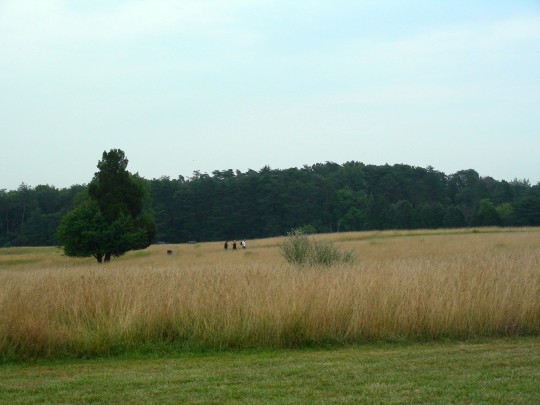
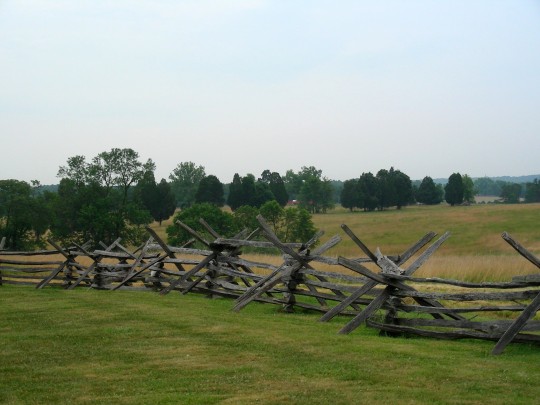
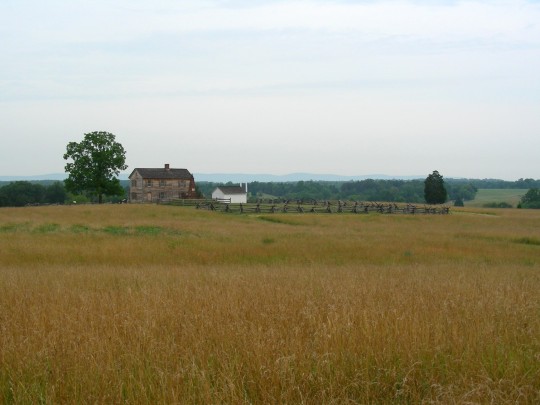
American Civil War: Second Battle of Bull Run, also known as the Battle of Second Manassas began on August 28, 1862. The battle ended on August 30.
#American Civil War#Second Battle of Bull Run#Battle of Second Manassas#started#28 August 1862#anniversary#US history#Viriginia#US Civil War#travel#vacation#original photography#tourist attraction#landmark#architecture#landscape#countryside#Manassas National Battlefield Park#Henry Hill Monument#Henry House#summer 2009#nature#fence#flora
8 notes
·
View notes
Photo

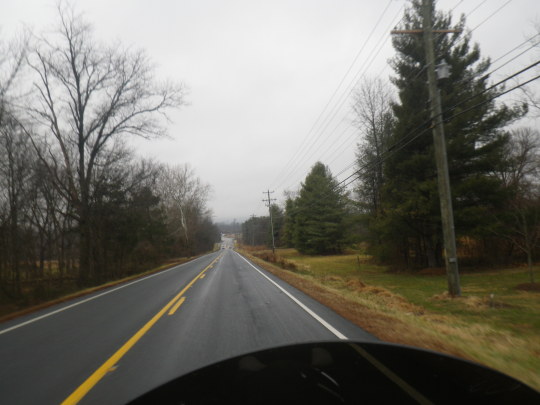




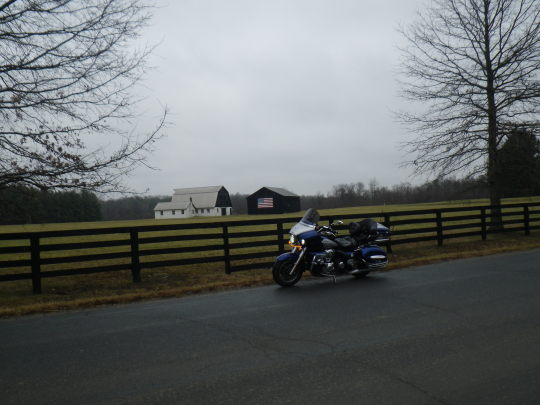

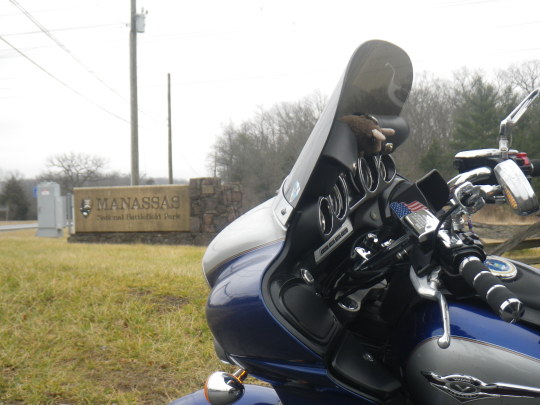

INAUGURATION DAY - INAUGURAL RIDE
Today was a day of historic significance. America, and the world, needs to pause for a moment, pull themselves from the spin of the media and look at today for what it was. Today we witnessed something truly and uniquely American - The peaceful transition of power. It doesn’t matter if you are left wing Democrat, right wing Republican, or like most Americans, somewhere in between, if you look at today for what it is, and you see the vision that we can hold our Nation’s leader accountable through another peaceful transition of power in either four or eight years; you can’t help but feel proud to be an American and know that America is truly Great . . .
OK - I’ll get off my soap box . . .Being a Fed working in DC, with my office inside the Red Zone, we were given the day off today . . . Since I hadn’t ridden yet this year I figured what better day for the year’s Inaugural ride. So I went to the shed under cloudy skies and lo and behold, the bike wouldn’t start. After sitting in the cold, the battery needed a boost - so I boosted it with my XP-3 power station. I suited up as it charged and the rains moved in. I thought about not riding - it’s supposed to be nice tomorrow . . . But I planned to ride today . . . The rains were letting up . . . the bike was started . . . in 15 minutes the democratic miracle would occur. I wanted to be on my bike enjoying my freedom when we experienced that symbol of our freedom . . . I pulled the bike out onto the wet roads and headed out.
I turned on the radio as I hit the road. New York Senator Chuck Schumer was just starting his Inaugural Address . . . and I knew where I had to be when our President took his oath. Could I get there in time? Senator Schumer read a letter written by Major Sullivan Ballou of the 2nd Rhode Island Volunteers to his wife. The letter was written one week before Major Ballou was killed in action at the First Battle of Bull Run, which is also known as the First Battle of Manassas. The letter itself spoke of Major Sullivan’s love of country and acceptance of his possible sacrifice; something I know every man and woman I served with felt as well, “If it is necessary that I should fall on the battlefield for my country, I am ready. I have no misgivings about or lack of confidence in the cause in which I am engaged and my courage does not halt or falter . . . my love of country comes over me like a strong wind and bears me irresistibly on with all these chains to the battlefield.”
I was riding along Bethlehem Road as Vice President Pence was sworn in. For the past six months I had been telling my Scouts about the wonder of this peaceful transition of power, now it was upon us. I unexpectedly got choked up listening to the radio. The fog and wetness in my eyes wasn’t from the weather, it was because I was proud to be an American. I thought I wasn’t going to make it to my destination in time. The Constitutional hour of noon was fast approaching . . . As I rolled down Groveton Road, listening to the Mormon Tabernacle Choir sing America the Beautiful I knew I had a chance.
I pulled off of US 29 into Manassas National Battlefield’s New York Monuments just as Supreme Court Chief Justice John Roberts began his oath. My pipes rumbled quietly as I made my way back to the monuments. I pulled in front of the monument honoring the 5th Regiment New York Volunteer Infantry, put my kickstand down, dismounted and snapped off a salute to the 5th and to our new President just as he uttered the words, “so help me God.”
The Power has been peacefully transferred. God Bless America.
I remounted and rode out as our new President gave his address. While I didn’t get in the 200 miles I wanted for today, I rode along some of the areas nicer riding roads. I stopped for a delicious warm schnitzel sandwich at a food truck at Gilbert's Corner before turning around and heading back to the shed.
The 2017 riding season has begun . . . It was a 61 mile slightly wet, slightly chilly ride, but it is under way. My bike was put away . . . she is dirty . . .but she has miles on her this year . . .
Whatever your politics, today at it’s core, is a great day for America. No matter who I voted for in November, I am an American and the individual installed today is the American President; therefore he is my President.
#kawasaki#kawasaki voyager#Kawasaki Voyager 1700#Voyager#Voyager 1700#First Ride#inauguration#inaugural#President#My President#America#American President
0 notes
Text
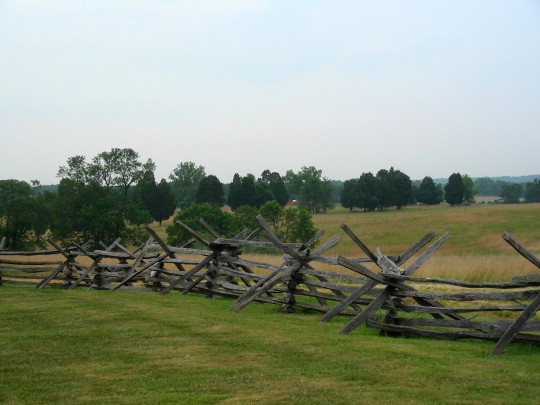







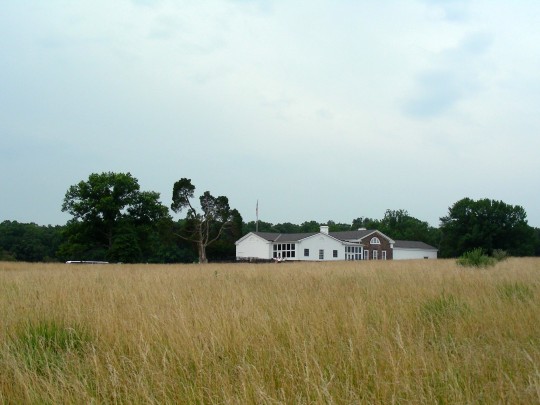


American Civil War: First Battle of Bull Run
On July 21, 1861 at Manassas Junction, Virginia, the first major battle of the war began and ended in a victory for the Confederate army.
#tourist attraction#Manassas National Battlefield Park#Prince William County#Henry House#travel#original photography#vacation#landmark#architecture#landscape#countryside#US Civil War#American Civil War#US history#USA#Virginia#summer 2009#Henry Hill Monument#First Battle of Bull Run#21 July 1861#anniversary#Manassas Junction#tombstone#Battle of First Manassas
2 notes
·
View notes
Photo
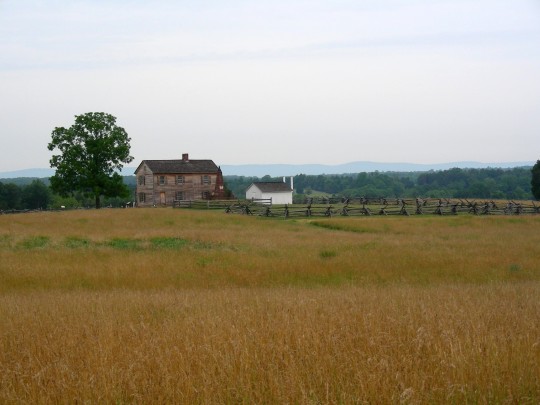






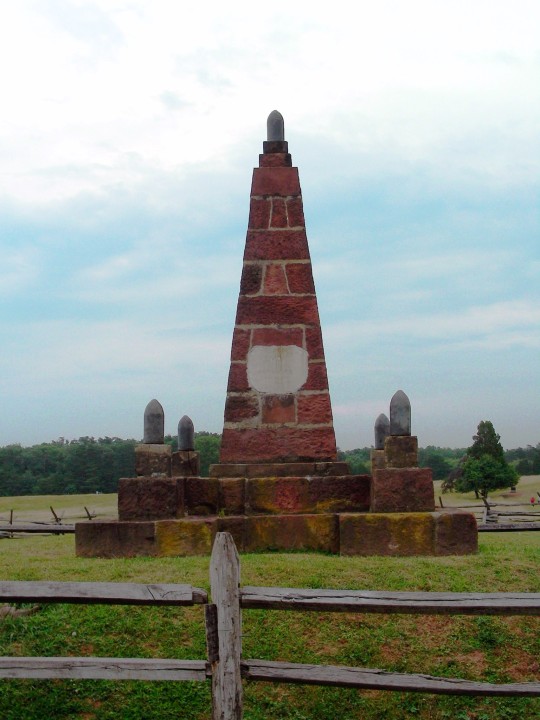
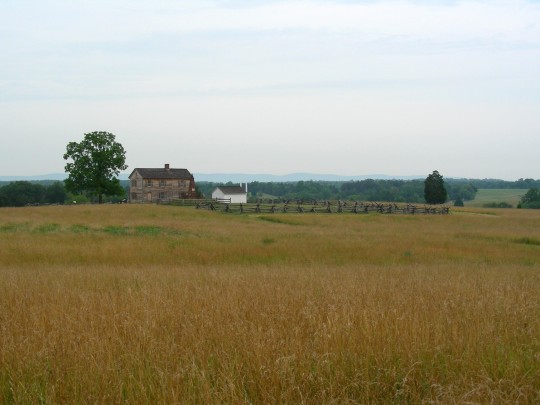
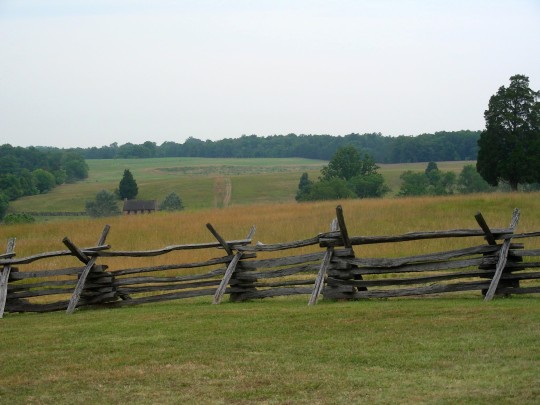
American Civil War: First Battle of Bull Run on July 21, 1861: at Manassas Junction, Virginia, the first major battle of the war began and ended in a victory for the Confederate army.
#Henry House#Henry Hill Monument#Manassas National Battlefield#travel#American Civil War#First Battle of Bull Run#Battle of First Manassas#USA#Virginia#21 July 1861#anniversary#US Civil War#US history#vacation#summer 2009#landscape#countryside#tree#meadow#flora#woods#field#architecture#farm building#original photography#tourist attraction#landmark
3 notes
·
View notes
Photo


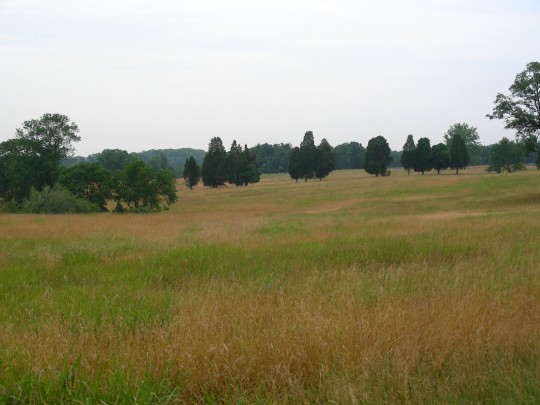
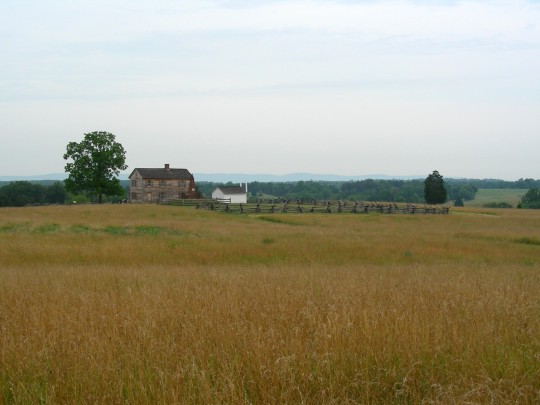
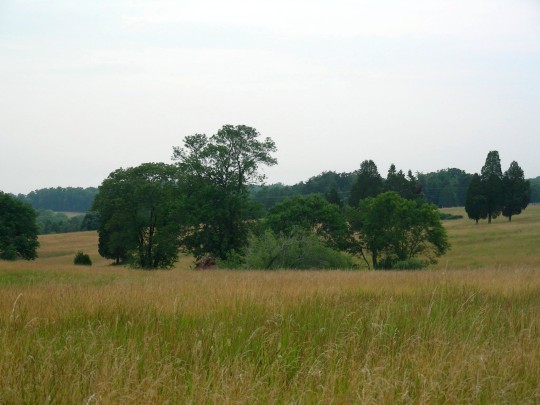
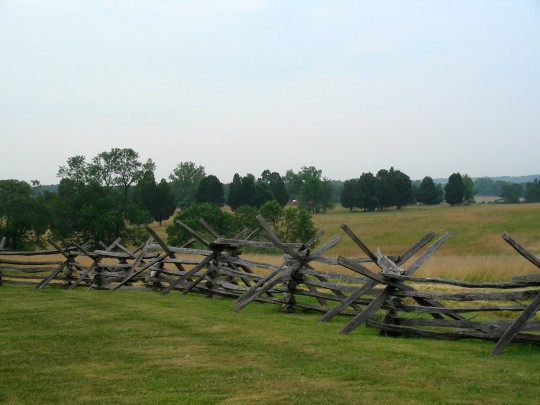

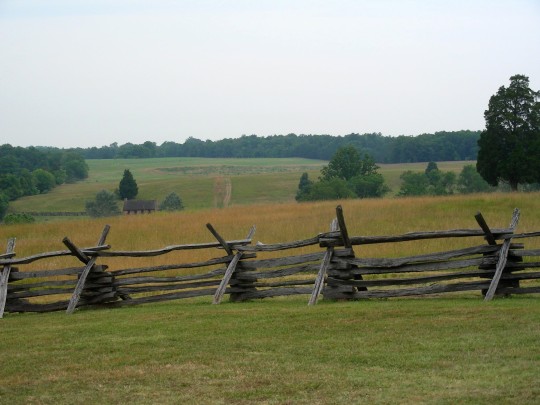
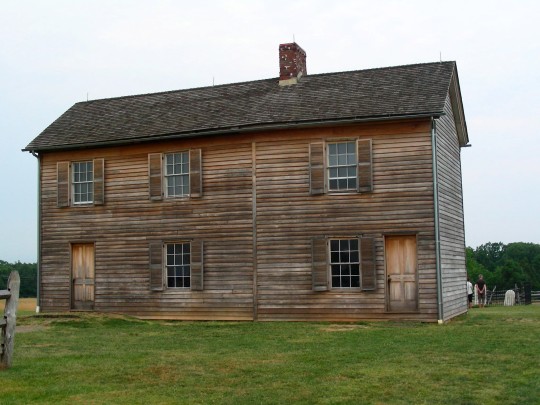

American Civil War: The Second Battle of Bull Run, also known as the Battle of Second Manassas ended on August 30, 1862.
#American Civil War#US Civil War#Second Battle of Bull Run#30 August 1862#Battle of Second Manassas#Manassas National Battlefield Park#Virginia#USA#anniversary#US history#travel#vacation#Henry House#Henry Monument#snake fence#landscape#countryside#wheat field#architecture#forest#woods#flora#tree#meadow#tourist attraction#original photography#summer 2009#landmark
7 notes
·
View notes
Photo





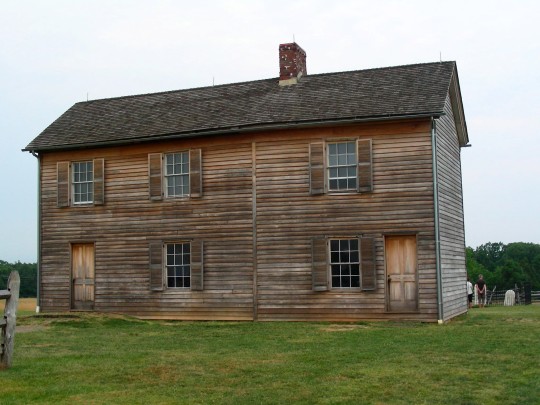




American Civil War: The Second Battle of Bull Run, also known as the Battle of Second Manassas ended on August 30, 1862.
#American Civil War#US Civil War#Second Battle of Bull Run#Viriginia#USA#30 August 1862#anniversary#US history#Battle of Second Manassas#travel#Henry Hill Monument#Henry House#Manassas National Battlefield Park#vacation#summer 2009#original photography#landscape#countryside#snake fence#grass#meadow#tree#forest#woods#architecture#Prince William County#Mid-Atlantic region#Southeastern USA#military history
12 notes
·
View notes